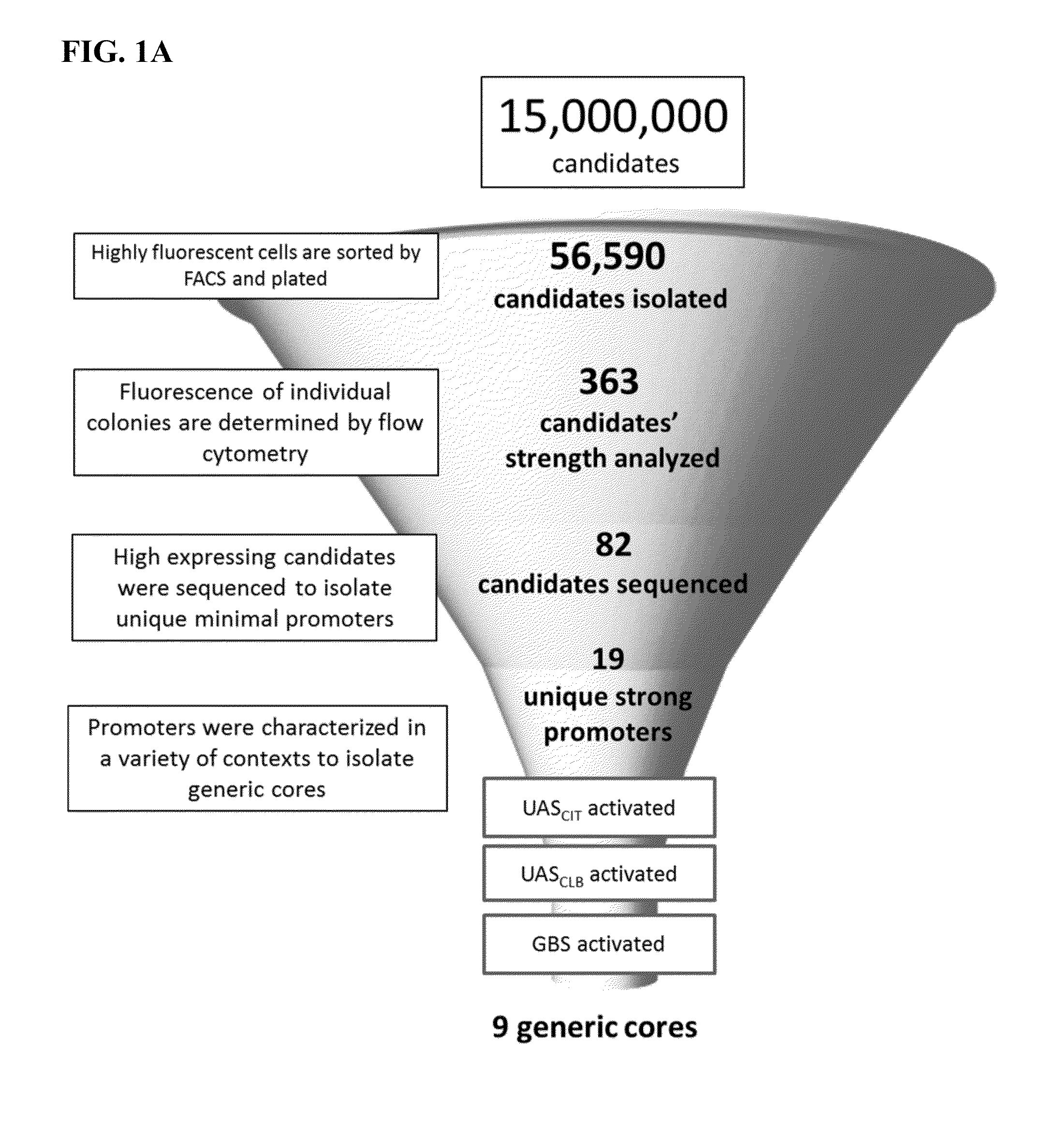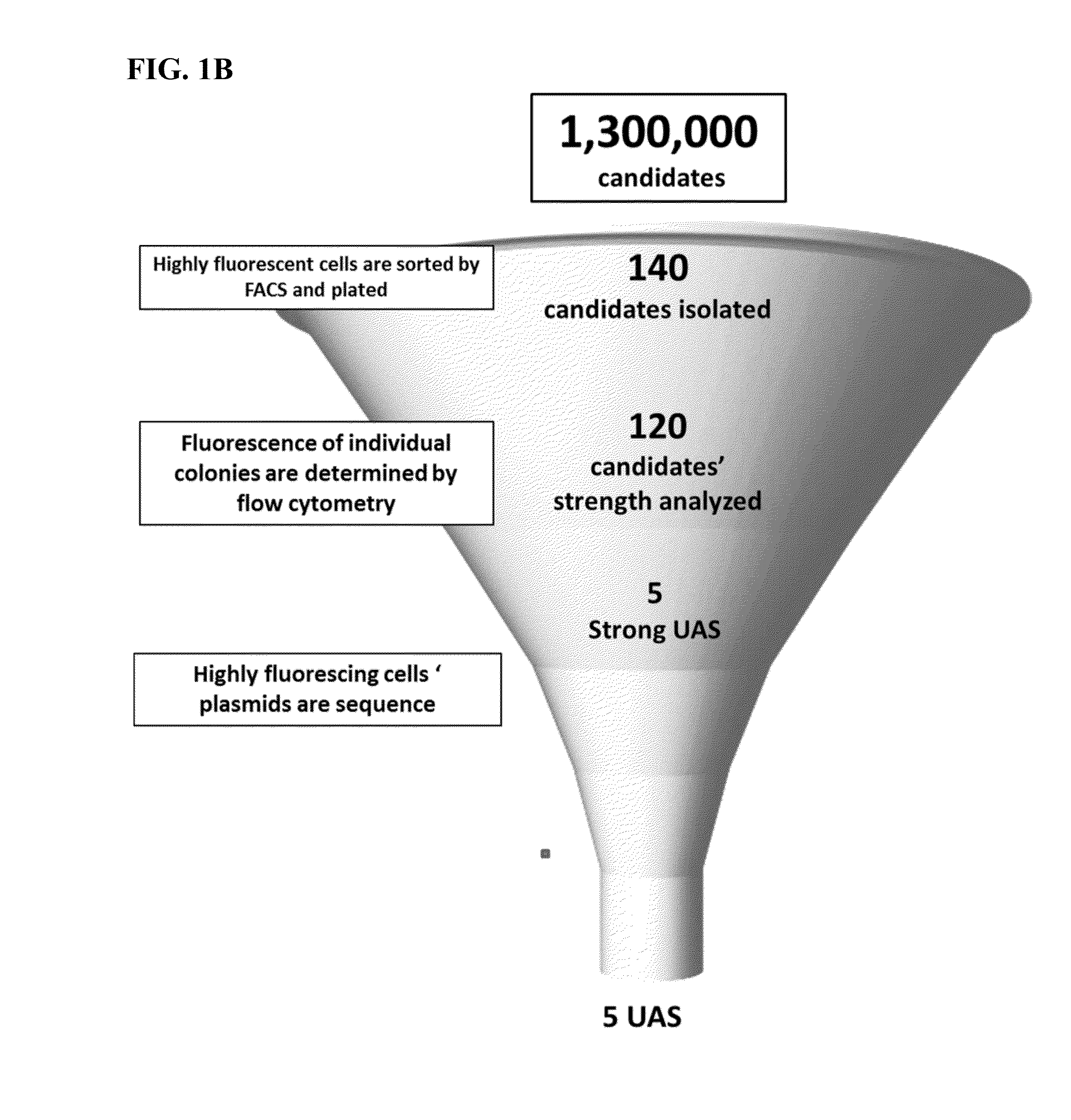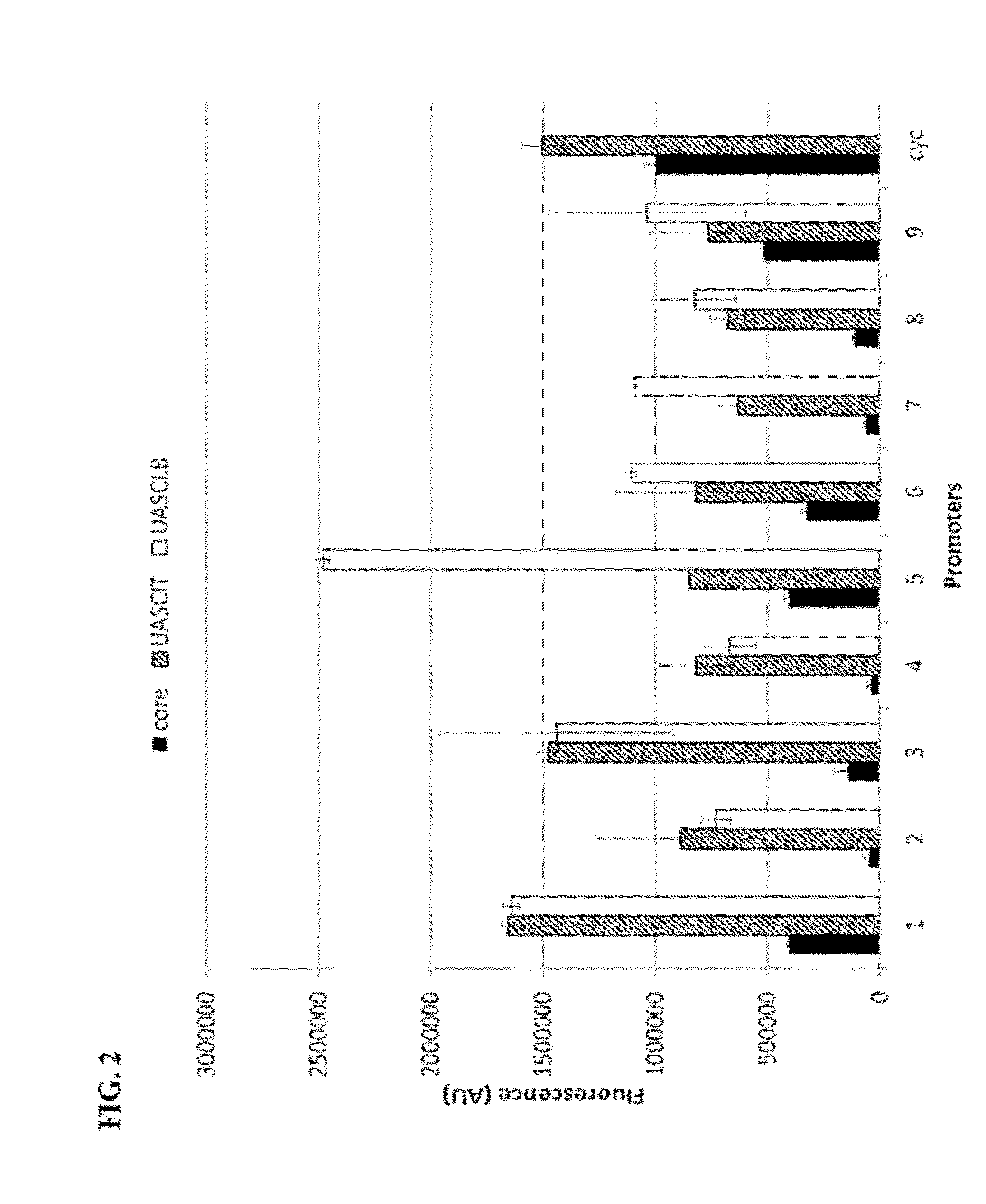Short exogenous promoter for high level expression in fungi
a promoter and high-level technology, applied in the field of short-exogenous promoters for high-level expression in fungi, can solve the problems of limiting the design strategy of yeast promoters, and promoters of either the same length as the original, so as to prevent homologous recombination and save the amount of dna used
- Summary
- Abstract
- Description
- Claims
- Application Information
AI Technical Summary
Benefits of technology
Problems solved by technology
Method used
Image
Examples
example 1
Spacer Length Determination
[0131]In order to create cores which could be successfully combined with UAS and TFBS, we needed to determine the minimal number of nucleotides required in yeast cores between the TATA box and the TSS (transcription start site) to promote successful loading of PIC and thus, transcription initiation by RNAP. In S. cerevisiae, the spacing has been suggested to be 37-90 bp (Russel, 1983, Struhl, 1985). This is peculiar since the structure for yeast RNAP supports a spacing of 30-31 bp (Leuther et al., 1996), the optimal spacing that is found in mammalian promoters (Carninci et al., 2006). Thus, we were curious about the true minimal spacing restrictions, especially since mammals have functioning promoters with spacers as short as 28 bp (Carninci et al., 2006). We created libraries with spacing of 20 (N20), 25 (N25) and 30 (N30) nucleotides using random oligonucleotides. By using a fluorescent reporter, the strengths of the libraries were measured. Interestingl...
example 2
Candidate Selection
[0132]Although all N30 libraries had low frequency of multiple insertions (when compared to N25 and N30 libraries), candidates were only pulled from sorted UASCIT N30 library since this library had the lowest frequency of multiple insertions. Promoters driving high expression of yECitrine were stripped of their UASCIT, and the strength of the core by itself was assessed by measuring fluorescence (FIG. 1A). In an effort to isolate which cores could be activated generically, they were combined with UASCLB and a Gal4 upstream activating sequence (GBS) (FIG. 1A). Cores that did not activate with UASCLB were removed from the candidate pool.
[0133]Unlike UASCLB, GBS could not be simply placed upstream of the core. A GBS spaced just 5 bp from the core actually reduced expression. Without wishing to bound by any theory, it is proposes that GBS sterically hinders access of PIC to the TATA box. Thus, we distanced GBS slightly further upstream from the TATA box. At 17 bp (the...
example 3
Core Analysis and Mechanism of Initiation
[0137]The nine selected cores are unique in sequence. They span a wide range of GC content from 47-70% (FIG. 4A). They have a diversity of TFBS, both in quantity and quality based on YEASTRACT database of TFBS (Teixeira et al., 2014) (FIG. 4A). Sequence homology is low among the set, and none of them match to any sequences found in the genome of S. cerevisiae (FIG. 4A). Considering the low level of homology between the nine cores, we were curious about what kinds of initiation mechanisms were being employing. Since all the cores contain a TATA box and generally, TATA-box containing native promoters use the SAGA complex to recruit RNAP, we hypothesized many would use the SAGA complex as well. A critical component of the SAGA complex is its Spt3 subunit. Without it, SAGA-dependent promoters fail to be transcriptionally activated (Bhaumik & Green, 2002, Mohibullah & Hahn, 2008). Thus, to test whether or not promoters created using the cores were...
PUM
| Property | Measurement | Unit |
|---|---|---|
| Fraction | aaaaa | aaaaa |
| Length | aaaaa | aaaaa |
| Nucleic acid sequence | aaaaa | aaaaa |
Abstract
Description
Claims
Application Information
 Login to View More
Login to View More - R&D
- Intellectual Property
- Life Sciences
- Materials
- Tech Scout
- Unparalleled Data Quality
- Higher Quality Content
- 60% Fewer Hallucinations
Browse by: Latest US Patents, China's latest patents, Technical Efficacy Thesaurus, Application Domain, Technology Topic, Popular Technical Reports.
© 2025 PatSnap. All rights reserved.Legal|Privacy policy|Modern Slavery Act Transparency Statement|Sitemap|About US| Contact US: help@patsnap.com



